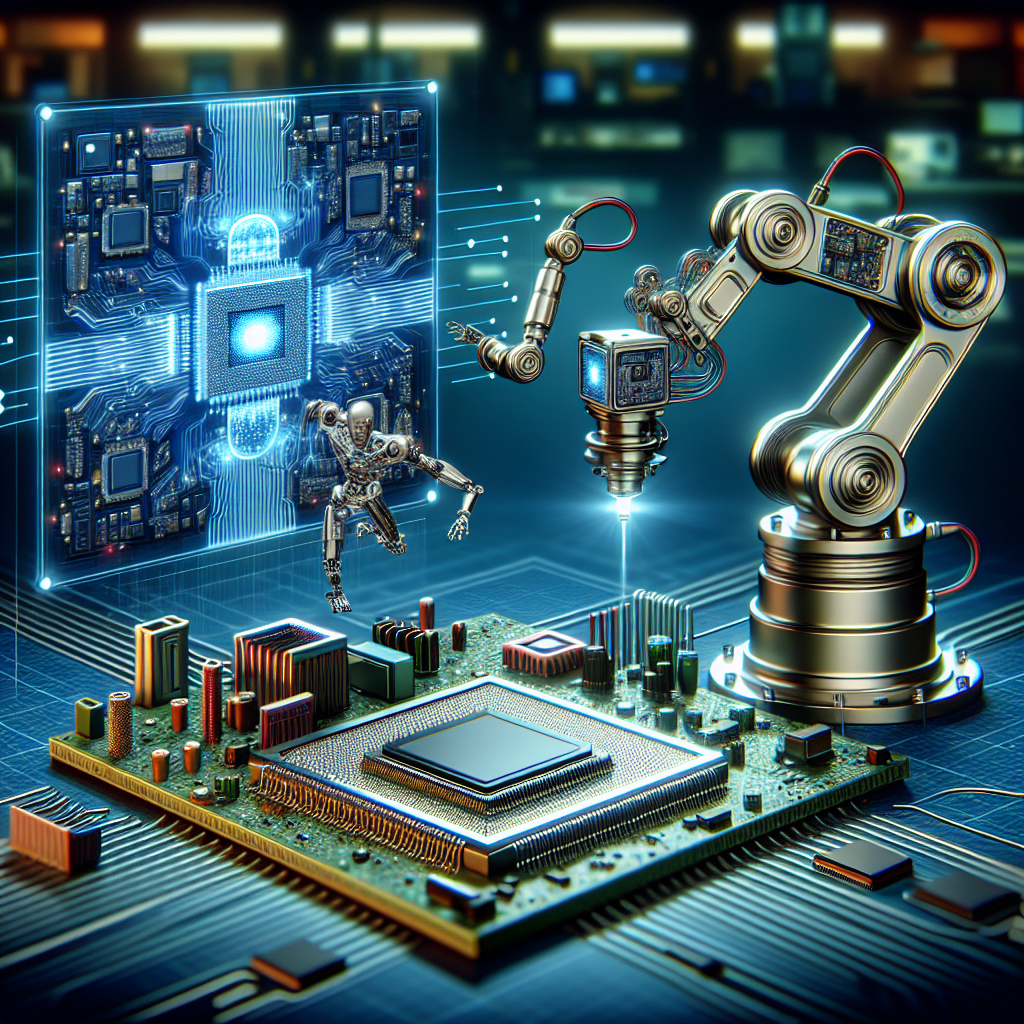In recent years, artificial intelligence (AI) and machine vision technology have revolutionized the field of quality control in various industries. Machine vision systems use cameras and image processing algorithms to inspect products and materials, detecting defects and ensuring that they meet quality standards. When combined with AI algorithms, these systems can achieve even greater levels of accuracy and efficiency in quality control processes.
AI and machine vision technology have the potential to significantly improve quality control in manufacturing, reducing defects, improving product consistency, and increasing overall efficiency. These systems can perform inspections at high speeds and with a level of precision that is difficult to achieve with manual inspection methods. They can also operate 24/7 without fatigue, leading to increased productivity and reduced costs in the long run.
One of the key advantages of AI and machine vision technology in quality control is the ability to detect defects that may be imperceptible to the human eye. These systems can analyze images and identify even the smallest defects or inconsistencies in products, helping manufacturers ensure that only high-quality products are released to the market. This level of accuracy is crucial in industries where even minor defects can lead to significant safety risks or product recalls.
Another benefit of AI and machine vision technology in quality control is the ability to perform inspections in real-time. This allows manufacturers to identify and address defects immediately, preventing defective products from reaching consumers and potentially causing harm. Real-time inspections also enable manufacturers to make adjustments to their production processes quickly, minimizing the impact of defects on overall product quality.
AI algorithms play a crucial role in enhancing the capabilities of machine vision systems in quality control. These algorithms can learn from data and improve their performance over time, making them more accurate and efficient in detecting defects. By analyzing large amounts of data, AI algorithms can identify patterns and trends that may be difficult for human inspectors to detect, leading to more reliable and consistent quality control processes.
In addition to defect detection, AI and machine vision technology can also be used for other quality control tasks, such as measuring dimensions, verifying assembly processes, and inspecting packaging. These systems can perform these tasks quickly and accurately, reducing the need for manual inspections and improving overall production efficiency.
Despite the numerous advantages of AI and machine vision technology in quality control, there are some challenges that manufacturers may face when implementing these systems. One of the main challenges is the initial cost of investing in the technology and training employees to use it effectively. However, the long-term benefits of improved quality control and increased productivity often outweigh the upfront costs.
Another challenge is ensuring that the AI algorithms used in machine vision systems are properly trained and calibrated to accurately detect defects. This requires a significant amount of data and expertise in machine learning, which may be a barrier for some manufacturers. Additionally, maintaining and updating the technology to keep up with changing production processes and quality standards can be a challenge for some companies.
Despite these challenges, the potential benefits of AI and machine vision technology in quality control make it a worthwhile investment for many manufacturers. By improving defect detection, increasing production efficiency, and reducing costs, these systems can help companies deliver high-quality products to consumers and maintain a competitive edge in the market.
FAQs:
Q: How accurate are AI and machine vision systems in quality control?
A: AI and machine vision systems can achieve very high levels of accuracy in quality control, often surpassing human inspectors in detecting defects and inconsistencies in products.
Q: Can AI and machine vision technology be used in all industries for quality control?
A: AI and machine vision technology can be applied to a wide range of industries for quality control, including automotive, electronics, pharmaceuticals, and food production.
Q: What are the main benefits of using AI and machine vision technology in quality control?
A: The main benefits include improved defect detection, increased production efficiency, real-time inspections, and the ability to perform tasks that may be difficult for human inspectors.
Q: What are the main challenges of implementing AI and machine vision technology in quality control?
A: Challenges include the initial cost of investment, training employees to use the technology effectively, ensuring the accuracy of AI algorithms, and maintaining and updating the technology as production processes change.
Q: How can manufacturers ensure the success of AI and machine vision systems in quality control?
A: To ensure success, manufacturers should invest in training employees, properly calibrate the AI algorithms, and regularly update the technology to keep up with changing production processes and quality standards.

